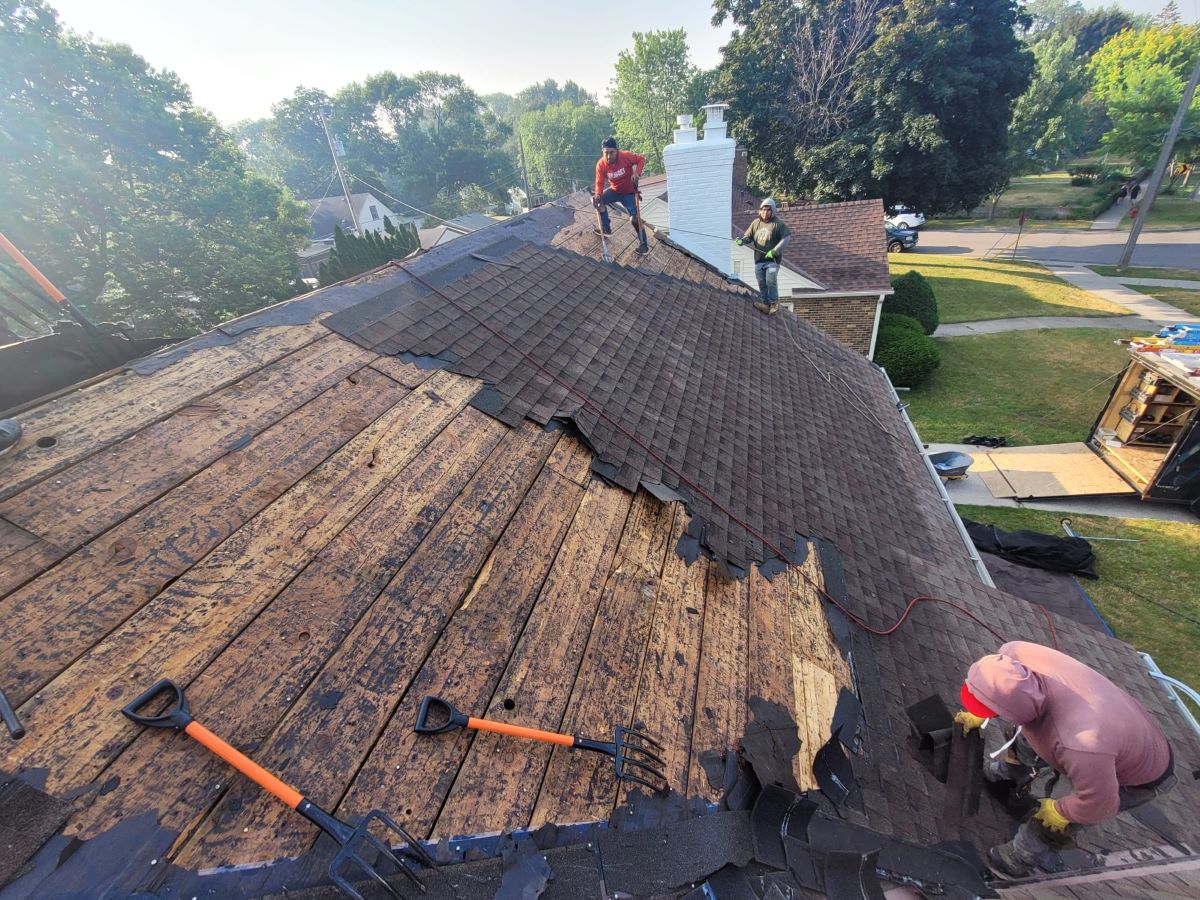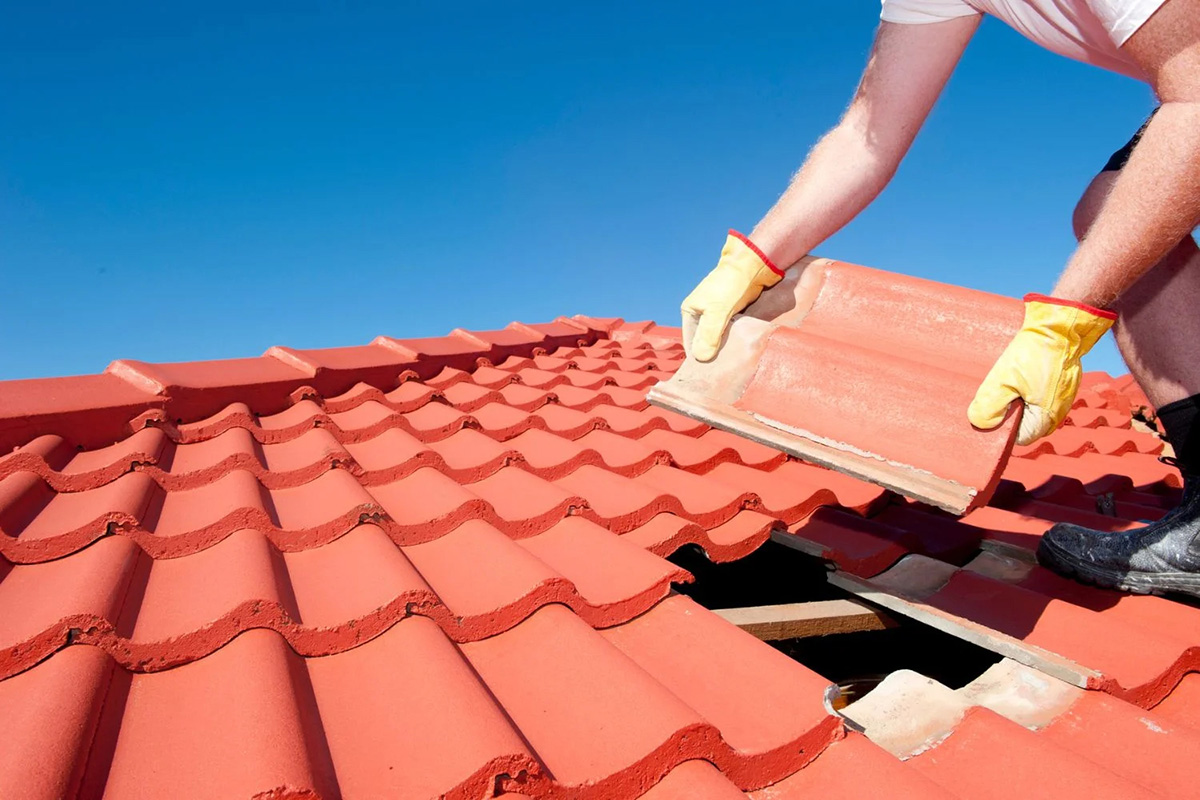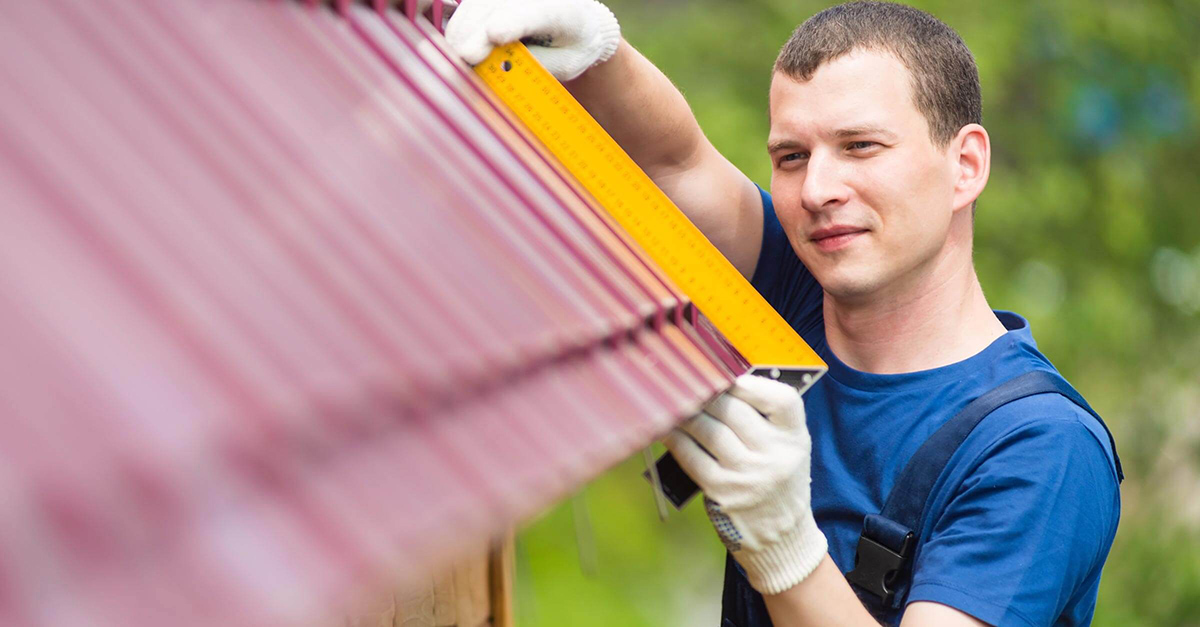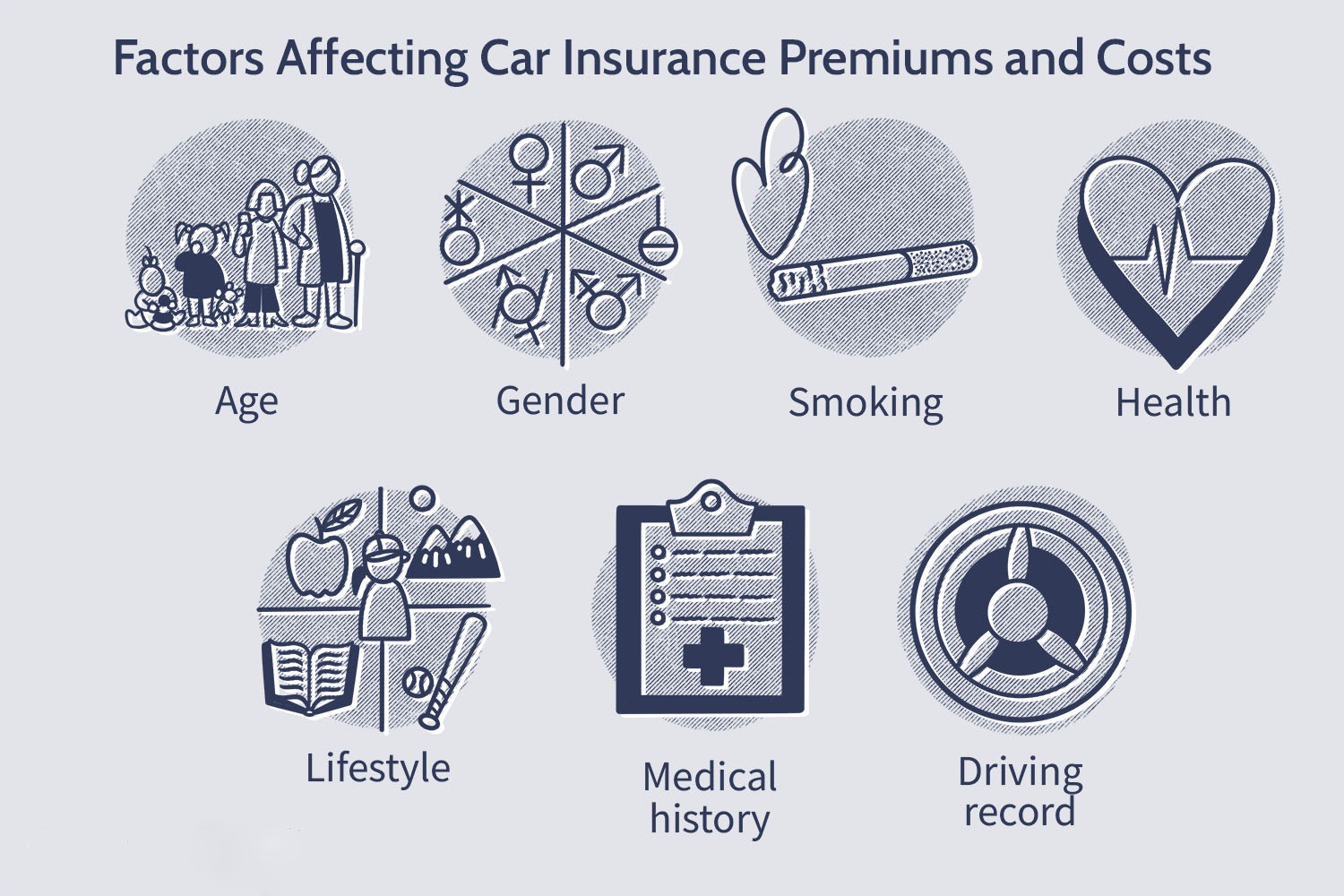

Finance
How To Get Insurance To Pay For A Roof
Published: November 5, 2023
Looking to finance your new roof? Learn how to get your insurance to cover the expenses and save money on roof repairs.
(Many of the links in this article redirect to a specific reviewed product. Your purchase of these products through affiliate links helps to generate commission for LiveWell, at no extra cost. Learn more)
Table of Contents
Introduction
Dealing with roof damage can be a stressful experience. Whether it’s due to severe weather conditions, age, or other factors, a damaged roof can leave you with leaking ceilings, water damage, and a hefty repair bill. Fortunately, if you have insurance coverage for your property, you may be able to get your insurance to pay for a roof replacement or repair.
Understanding the process of getting insurance to cover roof damage is crucial. It involves understanding your insurance policy, assessing the extent of the roof damage, documenting it properly, filing a claim, and negotiating with the insurance company. It also entails hiring a reputable roofing contractor to carry out the necessary repair or replacement work.
In this article, we will guide you through each step of the process, providing valuable tips and insights to help you navigate the complex world of insurance claims for roof damage. By following this guide, you can increase your chances of successfully getting your insurance company to pay for your roof repair or replacement.
Before diving into the details, it’s important to note that every insurance policy is different, and specific coverage options can vary. It’s vital to review your policy and understand the terms, conditions, and exclusions. If you have any questions or concerns, reach out to your insurance provider for clarification.
Now let’s delve into the process of getting insurance to pay for a roof and ensure your property is protected.
Understanding Your Insurance Policy
When it comes to getting your insurance to pay for a roof repair or replacement, the first step is to thoroughly understand your insurance policy. This includes knowing the specific details of your coverage, any exclusions, and the process for filing a claim.
Start by reviewing your insurance policy documents or contacting your insurance provider to get a clear understanding of what is covered under your policy. Different policies may have varying coverage for roof damage, so it’s important to know the specifics. Look for information regarding the perils covered (such as wind, hail, or fire), the age and condition of the roof that is eligible for coverage, and any deductible you may need to pay.
Pay close attention to any exclusions or limitations mentioned in your policy. Certain types of damage, such as pre-existing conditions or lack of maintenance, may not be covered. Understanding these exclusions can help you manage your expectations and prepare for any potential out-of-pocket expenses.
Take note of any additional coverage options that may be available to you. Some policies offer extended or optional coverage for specific types of roof damage, such as leaks or structural damage. Consider whether adding these coverages to your policy would be beneficial for your situation.
If you have difficulty understanding the language or terms in your insurance policy, don’t hesitate to reach out to your insurance provider for clarification. They should be able to explain the key provisions of your policy and answer any questions you may have.
By familiarizing yourself with your insurance policy, you will have a solid foundation for navigating the claims process and ensuring that you meet the necessary requirements to get your insurance to pay for your roof repair or replacement.
Assessing the Roof Damage
Before filing an insurance claim for roof damage, it’s important to accurately assess the extent of the damage. This assessment will help you determine if filing a claim is necessary and provide evidence to support your claim.
Start by conducting a visual inspection of the roof from both the exterior and interior of your property. Look for visible signs of damage such as missing or broken shingles, dents in metal roofs, or cracked tiles. Water stains on ceilings or walls can also indicate roof leaks. If you feel comfortable and safe doing so, you can use binoculars or a drone to get a closer look at the roof’s condition.
If you find significant damage or suspect hidden damage, it’s recommended to hire a professional roofing contractor to perform a thorough inspection. Roofing professionals have the expertise to identify and document damage that may not be obvious to an untrained eye. They can provide a detailed assessment report that includes photographs and an estimate of the repair or replacement costs. This report will be essential during the insurance claims process.
When assessing the damage, it’s crucial to differentiate between normal wear and tear and storm-related damage. Insurance policies typically cover damage caused by specific events, such as windstorms or hailstorms. Documenting the cause of the damage and establishing it as a covered peril will strengthen your claim.
Keep in mind that insurance companies may send their own adjuster to inspect the damage. It’s important to have your own assessment and documentation to compare and support your claim, ensuring a fair evaluation of the damage.
By thoroughly assessing the roof damage and obtaining professional inspections if necessary, you will have a solid foundation for building your insurance claim. This documentation will help substantiate the need for a repair or replacement and increase your chances of getting your insurance to cover the cost.
Documenting the Damage
Properly documenting the roof damage is crucial when filing an insurance claim. Accurate and detailed documentation will serve as evidence to support your claim and help ensure a fair assessment by your insurance company. Here are some key steps to effectively document the damage:
1. Take photographs: Use a digital camera or your smartphone to capture clear, high-resolution photographs of the damaged areas of your roof. Take photos from different angles and distances to provide a comprehensive view of the damage. Make sure to include close-up shots that clearly show the extent of the damage, such as missing shingles or dented areas.
2. Create a written description: Alongside the photographs, write a detailed description of the damage. Include information about the date and time of the damage, the specific areas affected, and any visible signs of damage that you observe. Be as specific as possible, providing measurements if applicable.
3. Obtain professional assessments: If you haven’t already, consider hiring a professional roofing contractor to provide an expert assessment of the damage. Their report will serve as essential documentation for your claim. Include their assessment report and any estimates they provide in your documentation.
4. Keep records: Maintain organized records of all communication related to the roof damage and your insurance claim. This includes emails, letters, phone calls, and any other interactions with your insurance company. Retaining records will help you keep track of the progress and provide evidence of your efforts throughout the claims process.
5. Preserve samples: If possible, save any samples of damaged materials from your roof, such as broken shingles or pieces of metal. These physical samples can serve as additional proof of the damage and may be requested by the insurance adjuster or used during the claim evaluation.
Remember, it’s vital to document the damage in a timely manner. Delaying the documentation process can make it more challenging to prove that the damage was directly related to the incident you are filing the claim for, potentially resulting in a denial or reduced coverage.
By taking detailed photographs, creating written descriptions, obtaining professional assessments, keeping records, and preserving samples, you will have a comprehensive and well-documented claim that strengthens your case when filing with your insurance company.
Filing an Insurance Claim
Filing an insurance claim for roof damage is a critical step in getting your insurance to pay for repairs or replacement. To ensure a smooth and successful claims process, follow these steps:
1. Review your policy: Before filing a claim, review your insurance policy to understand the coverage, deductibles, and any specific requirements or time limits for reporting the damage. Make sure you have a clear understanding of what is included and excluded from your coverage.
2. Contact your insurance company: Notify your insurance company as soon as possible to report the roof damage. Most insurance companies have claims departments or hotlines available 24/7. Have your policy number and details about the damage ready when you call.
3. Provide necessary information: Be prepared to provide the insurance company with essential details, such as the date of the incident, a description of the damage, and any relevant documents or photographs you have collected. Be honest and accurate when describing the extent of the damage.
4. Follow the insurer’s instructions: Your insurance company will guide you through the claims process. They may ask you to provide additional documentation or schedule an appointment with an adjuster to assess the damage in person. Follow their instructions promptly and provide the requested information to avoid any delays in the claims process.
5. Complete the claim form: Fill out the claim form provided by your insurance company. Be thorough and provide accurate information. Double-check the form for any errors before submitting it.
6. Document all communication: Keep records of all communication with your insurance company, including dates, times, and names of the representatives you speak with. This will help you track the progress of your claim and serve as evidence in case of any disputes or issues.
7. Cooperate with the insurance adjuster: If an insurance adjuster is assigned to your claim, they will assess the damage and determine the amount of coverage you are eligible for. Cooperate with the adjuster and provide them with all necessary access to your property to ensure an accurate evaluation.
Remember, it is important to file your claim as soon as possible after the damage occurs. Failure to report the damage promptly could result in a denial of your claim or reduced coverage.
By following these steps and actively engaging with your insurance company, you can navigate the claims process effectively and maximize your chances of obtaining coverage for your roof repair or replacement.
Meeting with the Insurance Adjuster
When filing an insurance claim for roof damage, it’s common for the insurance company to send an adjuster to assess the extent of the damage. The adjuster plays a crucial role in determining the coverage and settlement amount for your claim. Here’s what you need to know about meeting with the insurance adjuster:
1. Schedule the appointment: Once you have filed your claim, the insurance company will typically assign an adjuster who will contact you to schedule a meeting. Ensure that you find a time that works for both parties and confirm the details in writing.
2. Prepare for the meeting: Before the adjuster arrives, gather all the necessary documentation, including photographs, written descriptions, and estimates from professional roofers. Having this information readily available will help you provide a clear and concise account of the damage.
3. Be present during the inspection: It’s essential to be present when the adjuster inspects your roof. This allows you to point out specific areas of damage and provide any additional information that may impact the assessment. If you cannot be present, make arrangements for someone else to represent you.
4. Provide accurate information: During the meeting, be truthful and provide accurate information about the incident that caused the damage. Avoid exaggerating or downplaying the extent of the damage, as this can undermine your credibility. Answer any questions the adjuster may have to the best of your knowledge.
5. Document the meeting: Take notes during the meeting, including the adjuster’s name, contact information, and any agreements or promises made. This documentation will be useful for reference and can be used if any discrepancies arise during the claims process.
6. Ask questions and seek clarification: If you have any questions or concerns during the meeting, don’t hesitate to ask the adjuster for clarification. Understanding the assessment process and the factors they consider can help you better navigate the claim settlement negotiation.
7. Review the adjuster’s report: After the inspection, the adjuster will prepare a report detailing their findings, including the extent of the damage and the estimated cost of repairs or replacement. Review this report carefully to ensure that it accurately reflects the damage you documented.
Remember, while the insurance adjuster works for the insurance company, it’s crucial to maintain a professional and polite demeanor during the meeting. Building a good rapport can help facilitate a fair evaluation of the damage and increase the likelihood of a favorable settlement.
By actively participating in the meeting with the insurance adjuster and providing accurate information, you can ensure that your claim is properly assessed and increase the chances of receiving the coverage you deserve for your roof damage.
Negotiating with the Insurance Company
Once the insurance adjuster has assessed the damage and provided you with a settlement offer, it’s time to enter into negotiations with the insurance company. Negotiating the settlement can help ensure that you receive fair compensation for your roof repair or replacement. Here are some tips for effective negotiation:
1. Review the settlement offer: Carefully analyze the initial settlement offer provided by the insurance company. Compare it to the estimates and assessments you gathered from professional roofers. If you feel that the offer is inadequate or does not accurately reflect the extent of the damage, politely express your concerns to the insurance company.
2. Gather additional evidence: If the initial offer falls short, gather any additional evidence that supports your claim. This can include additional photographs, expert opinions, or documentation proving that the quoted repair costs are reasonable and in line with local market rates.
3. Submit a counteroffer: Based on your research and additional evidence, prepare a counteroffer outlining your proposed settlement amount. Present your counteroffer in a clear and concise manner, supported by facts and documentation. Be prepared to justify your requested amount based on the extent of the damage and the costs associated with repairs or replacement.
4. Negotiate in writing: It’s essential to maintain a written record of all correspondence during the negotiation process. Communicate with the insurance company via email or certified mail, ensuring that you have a paper trail of the discussions and any agreements reached. This documentation can be crucial if any disputes or disagreements arise later on.
5. Be persistent and patient: Negotiating with the insurance company may require persistence and patience. Often, the initial settlement offer is just the starting point of the negotiation process. Don’t be afraid to advocate for yourself and continue the discussion until you reach a fair agreement.
6. Seek professional assistance if needed: If negotiations reach an impasse or become too complicated, you may consider seeking professional assistance from a public adjuster or an attorney who specializes in insurance claims. They can provide guidance, represent your interests, and help navigate the negotiation process on your behalf.
Remember, maintaining a professional and cooperative attitude throughout the negotiation process can help foster a more productive dialogue with the insurance company. Stay firm in your position, but be open to reasonable compromises to achieve a fair resolution.
By utilizing these negotiation strategies and advocating for yourself, you can increase your chances of reaching a satisfactory settlement with the insurance company that covers the necessary repairs or replacement of your damaged roof.
Hiring a Roofing Contractor
When dealing with roof damage, hiring a reputable and qualified roofing contractor is crucial to ensure proper repair or replacement. Finding the right contractor can significantly impact the outcome of your insurance claim. Here’s what you need to know when hiring a roofing contractor:
1. Ask for recommendations: Seek recommendations from friends, family, or neighbors who have had positive experiences with roofing contractors in the past. Personal referrals can provide valuable insights and help you identify trustworthy contractors in your area.
2. Research and verify credentials: Conduct thorough research on potential contractors. Look for credentials such as licenses, insurance coverage, certifications, and memberships in professional organizations. Verify their legitimacy by checking their reputation with local trade associations or consumer protection agencies.
3. Read reviews and testimonials: Read online reviews and testimonials from previous customers. This will give you a sense of the contractor’s reputation, reliability, and the quality of their work. Keep in mind that a few negative reviews may not be a cause for concern if the majority of the feedback is positive.
4. Obtain multiple estimates: Reach out to at least three different contractors and request detailed written estimates for the repair or replacement of your roof. Compare the estimates carefully, considering factors such as materials used, the extent of the work, and the timeframe for completion. Beware of overly low or high bids, as they may indicate subpar workmanship or hidden costs.
5. Review the contract: Before making a decision, carefully review the terms and conditions outlined in the contract provided by the selected contractor. Ensure that all essential details, such as start and completion dates, payment schedule, warranties, and scope of work, are clearly stated. Seek clarity on any ambiguous or confusing aspects of the agreement.
6. Confirm insurance coverage: Verify that the contractor has liability insurance and worker’s compensation coverage. Request copies of their insurance certificates and contact the insurance provider to confirm their validity. This step will protect you from potential liability in case of accidents or damage during the roofing project.
7. Communication and reliability: Choose a contractor who demonstrates good communication skills and promptly responds to your inquiries. A reliable contractor will keep you informed throughout the project, providing updates on progress, addressing any concerns, and answering your questions in a timely manner.
Remember, hiring a professional contractor is essential not only for the success of your insurance claim but also for the long-term durability and integrity of your roof. Investing time and effort in finding the right contractor will pay off in the quality of the workmanship and the satisfaction of a job well done.
By following these guidelines, you can select a reputable roofing contractor who will complete the necessary repairs or replacement efficiently and to your satisfaction.
Completing the Roof Repair/Replacement
Once you have hired a reputable roofing contractor, it’s time to move forward with the actual repair or replacement of your roof. This stage is crucial in ensuring the safety and structural integrity of your property. Here are the key steps involved in completing the roof repair or replacement:
1. Preparing the site: Prior to starting the work, the roofing contractor will prepare the site by ensuring proper safety measures are in place. This may include the installation of scaffolding, tarps for protection, and proper disposal systems for debris.
2. Removing the old roofing material: If the roof is being replaced, the contractor will strip away the existing roofing material, inspecting the underlying structure for any damage or issues that need to be addressed before installing the new roof.
3. Repairing or replacing damaged components: If there are any damaged or rotten decking, fascia boards, or insulation, the contractor will make the necessary repairs or replacements to ensure a solid foundation for the new roof.
4. Installing the new roof: The contractor will then install the new roofing material according to the manufacturer’s guidelines and industry best practices. This may involve shingle installation, metal panel placement, or tile setting, depending on the type of roof you have chosen.
5. Adhering to building codes and regulations: Throughout the process, the roofing contractor will ensure compliance with local building codes and regulations. This is important to meet safety standards and ensure that the roof repair or replacement passes any necessary inspections.
6. Maintaining open communication: Maintain open lines of communication with the contractor during the entire process. Stay informed about the progress, voice any concerns, and address any unexpected issues that may arise. Regularly inspect the work to ensure it meets your expectations and the agreed-upon specifications.
7. Obtaining documentation: Once the roof repair or replacement is complete, request documentation from the contractor. This may include warranties for both labor and materials used. Keep these records safe, as they will be important for any future claims or maintenance.
8. Final walkthrough and inspection: Schedule a final walkthrough with the roofing contractor to ensure that all aspects of the project have been completed to your satisfaction. Inspect the finished work, addressing any last-minute touch-ups or required adjustments.
By following these steps and working closely with your chosen roofing contractor, you can ensure a smooth and successful completion of the roof repair or replacement. Remember to maintain clear communication, stay involved in the process, and address any concerns promptly for a durable and well-functioning roof.
Finalizing the Insurance Claim
After completing the roof repair or replacement, it’s time to finalize your insurance claim and ensure you receive the appropriate coverage for the expenses incurred. Taking the following steps will help wrap up the insurance claim process:
1. Provide documentation: Submit all necessary documentation to your insurance company to support your claim. This includes invoices, receipts, photographs, and any other relevant evidence of the completed roof repair or replacement. Clear and comprehensive documentation will help validate your expenses and demonstrate the successful completion of the project.
2. Review the final settlement offer: Once the insurance company receives the documentation, they will assess it and provide you with a final settlement offer. Review the offer carefully, comparing it to the estimates and invoices you received from the roofing contractor. If you have any concerns or discrepancies, discuss them with the insurance company promptly.
3. Negotiate if necessary: If you believe the final settlement offer does not adequately cover the expenses you incurred, you have the option to negotiate with the insurance company. Present any additional evidence or documentation that supports your position. Be prepared to provide a clear and compelling argument for a higher settlement amount based on the documentation and the work completed.
4. Accepting the settlement: If you are satisfied with the final settlement offer and believe it accurately reflects the expenses incurred, you can accept the offer from the insurance company. Carefully review any associated documentation and agreements before signing and returning them to the insurance company.
5. Settling the claim: Once you have accepted the settlement offer, the insurance company will process the payment. This may involve issuing a check for the agreed-upon amount or arranging a direct deposit into your bank account. Ensure you keep copies of all settlement documents and payment receipts for your records.
6. Follow up on any outstanding items: In some cases, there may be outstanding items or concerns that need to be addressed after the claim settlement. This could include supplementary payments for uncovered expenses or resolving any issues that arose during the claim process. Communicate with the insurance company to resolve these matters promptly.
7. Provide feedback: Consider providing feedback to your insurance company about the claims process. Share your satisfaction with the outcome or voice any concerns you experienced during the process. Providing feedback can help improve the process for future claimants and ensure a better experience for all parties involved.
By completing these steps and effectively finalizing your insurance claim, you can ensure that you receive the appropriate coverage for the roof repair or replacement expenses. Regular communication with the insurance company during the process is crucial to resolving any outstanding matters and achieving a successful claim settlement.
Conclusion
Dealing with roof damage can be a challenging and stressful experience, but knowing how to navigate the insurance claim process can make a significant difference. By understanding your insurance policy, accurately assessing and documenting the damage, filing a claim, and engaging in effective negotiation, you can increase your chances of getting your insurance company to pay for your roof repair or replacement.
Remember to thoroughly review your insurance policy to understand your coverage and any specific requirements for filing a claim. Assess the extent of the roof damage carefully, documenting it with photographs, written descriptions, and professional assessments. File the claim promptly and provide all necessary information to the insurance company.
When meeting with the insurance adjuster, be present, provide accurate information, and maintain open lines of communication. Negotiate with the insurance company, if necessary, by presenting additional evidence and supporting documentation to reach a fair settlement.
Hiring a reputable roofing contractor is crucial to ensuring the successful completion of the roof repair or replacement. Choose a contractor with proper credentials, obtain multiple estimates, and review the contract thoroughly before starting the work. Engage in clear and consistent communication with the contractor throughout the project.
Once the roof repair or replacement is complete, finalize your insurance claim by providing all necessary documentation and reviewing the settlement offer. Negotiate if needed, accept the settlement offer that reflects the expenses incurred, and settle the claim with the insurance company.
In conclusion, successfully getting your insurance to pay for a roof repair or replacement requires knowledge, preparation, and effective communication. By following the steps outlined in this guide, you can navigate the insurance claim process with confidence, ensuring that your roof damage is properly addressed and covered by your insurance policy.
Always remember that every insurance policy and claim is unique, so it’s important to consult your specific policy and work closely with your insurance provider throughout the process. By being proactive, thorough, and persistent, you can minimize the stress of dealing with roof damage and maximize your chances of a successful insurance claim.














